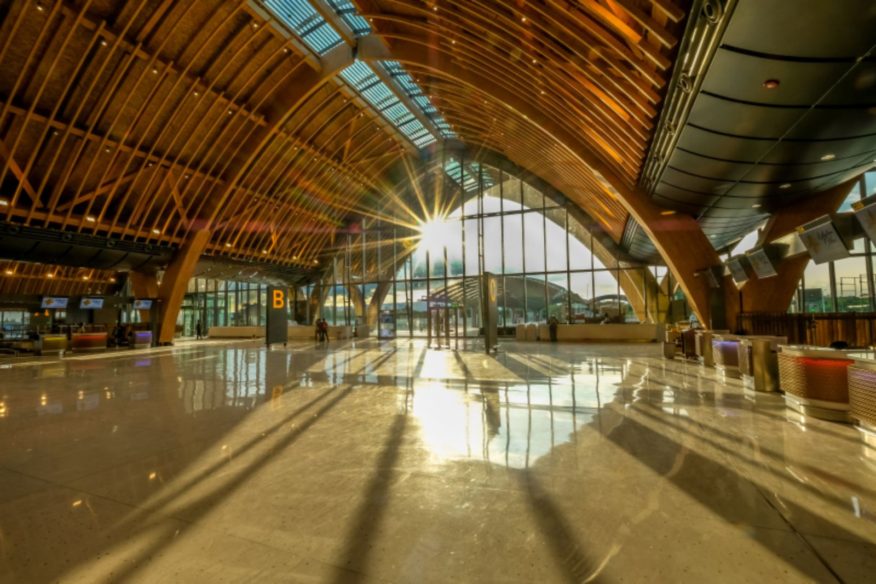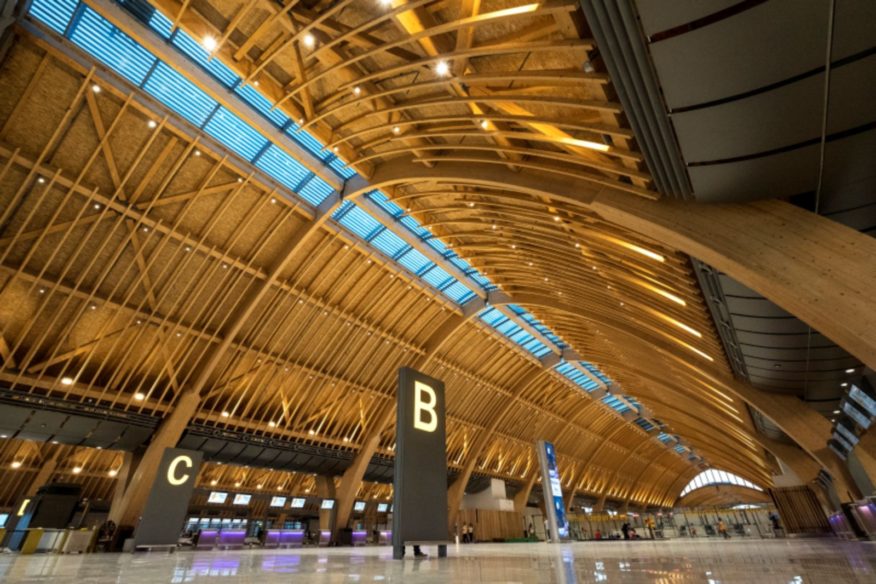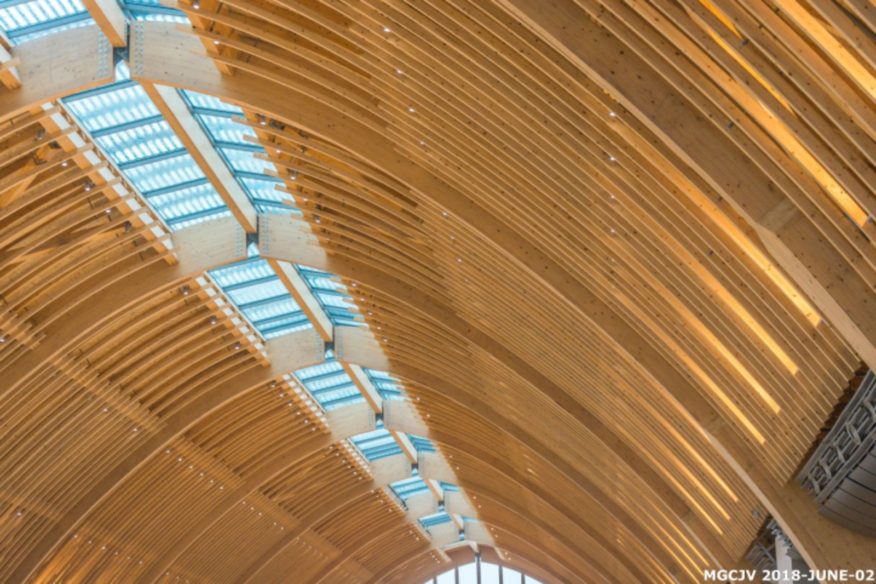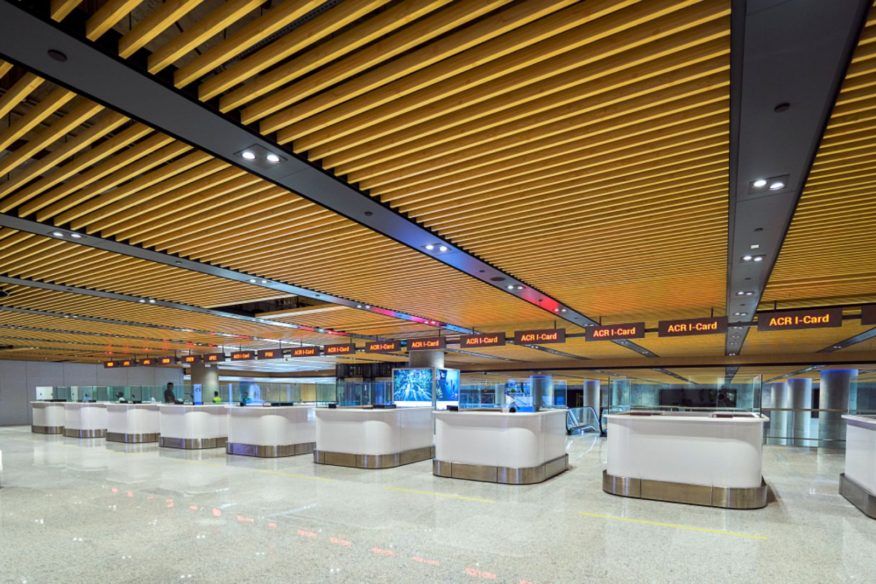
After three years of construction, the rhythmic drum beats and shimmering vermillion garb of traditional Sinulog dance greeted a gaggle of first-ever arrivals this summer to Mactan Cebu International airport’s newly complete Terminal 2. Crown jewel of the Philippine government’s ambitious infrastructure program, the 700,000 sf, $327 million project inaugurated with a display sure to cement its unofficial tagline as “the world’s friendliest airport.”

Located in Lapu-Lapu City in Metro Cebu, the gleaming addition is expected to attract nearly 12.5 million travelers annually, bolstering an already robust tourism industry, and driving traffic to one of the “the best islands in the world”—as Conde Nast Traveler anointed Cebu and the surrounding Visayan islands last year—as well as the rest of the Philippines’ premiere resort destinations.
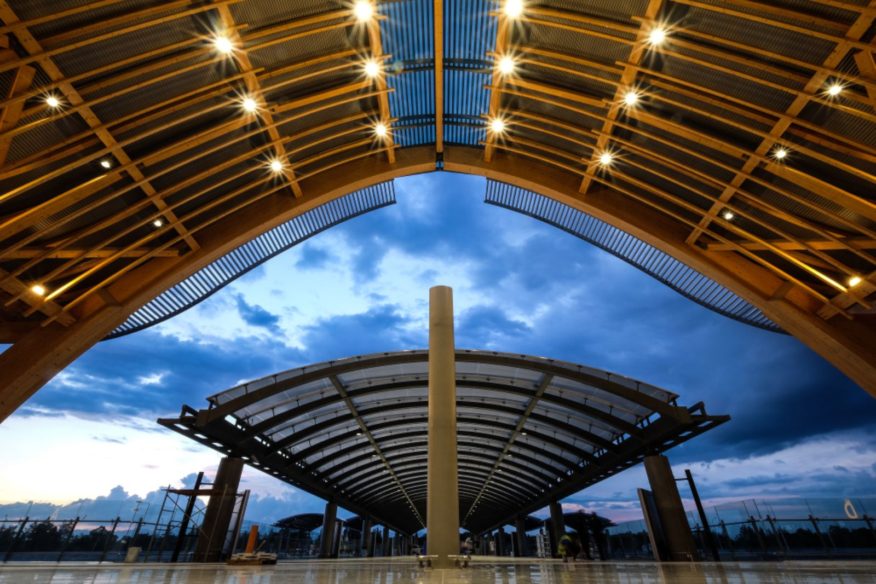
Indeed, the azure waters and pristine white sands synonymous with the Philippines provided ample inspiration for Terminal 2. A first impression for visitors from around the world, Terminal 2 was conceived as both a literal and symbolic gateway to the Philippines — a perfect synthesis and expression of its traditions, geography, and culture.

As such, a star-studded cast of native collaborators was brought on board to represent the Philippine perspective: industrial design luminary Kenneth Cobonpue—himself, a Cebuano—in addition to interior designer Budji Layug and architect Royal Pineda, to aid Hong Kong-based Integrated Design Associates.

The result is an undulating, light-filled masterwork, which evinces the Filipino way of life in nearly ever facet of its design, from (quite literally) floor to ceiling. Inspired by rolling ocean waves, the building structure comprises a sequence of glulam arches, each spanning nearly 100 feet—an organization that effectively reduces the number of required structural columns, facilitating a far more open interior.

Continuing on theme, the trussed skeleton of those arches is left exposed on its underside, resulting in the project’s unequivocal centerpiece — a ceiling of curvilinear glulam beams, almost cathedral-like in its soaring quality, meant to evoke the hull of a boat.
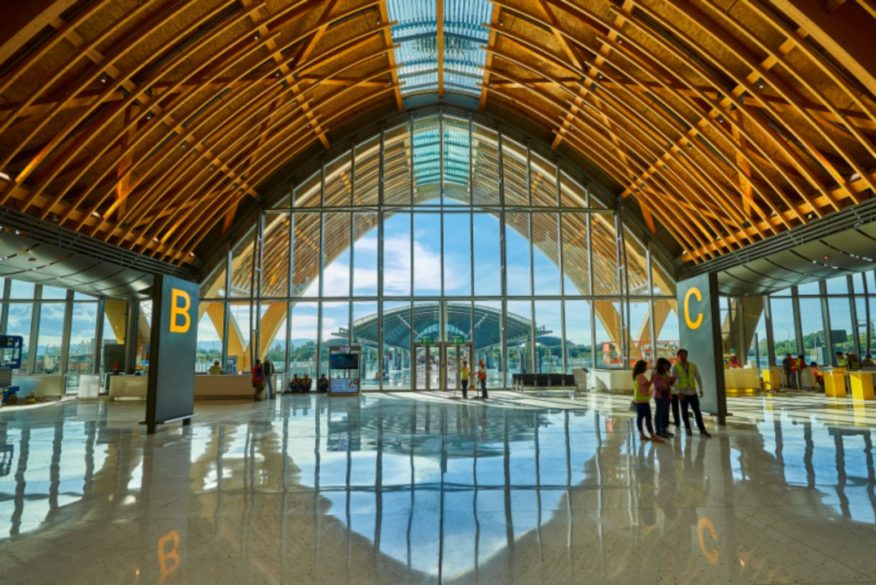
While the influence of a rich island culture is clearly present in these nautically-inspired macro elements, contextual nods to Filipino life crop up in even the project’s minute details. Forty-eight lower-than-average check-in counters—expandable to 72—render airport staff highly visible to passengers (and rice versa), facilitating a more personal interaction in keeping with Filipinos’ well-known warmth and congeniality.

On the counters themselves, sustainable, fiber-synthetic mesh weaving—accented by LED lights—channels another Philippine mainstay: an ancient weaving and craft tradition that remains very much alive today. Underfoot, Terminal 2’s terrazzo floors are inlaid with iridescent mother-of-pearl, naturally abundant in the Philippines.

In terminal bathrooms, the island nation’s wealth of natural resources is further invoked via large moss feature walls which, made from natural lichen, serve to decrease humidity and improve air quality, in addition to supplying a piquant pop of color.

And finally, suspended over a sprawling duty free section, a sinuous, meandering wood ceiling hearkens back to the exposed glulam of the main halls, contrasting their towering quality with a lower, more intimate scale.

With such green construction, this sustainable and energy-efficient airport terminal does away with the stale utility of typically antiseptic airports, creating instead, a serious hospitality project. Form and function coalesce into a new home for the world’s friendliest airport. Source and photos Courtesy of TC Laughlin Public Relations Group, Inc.
